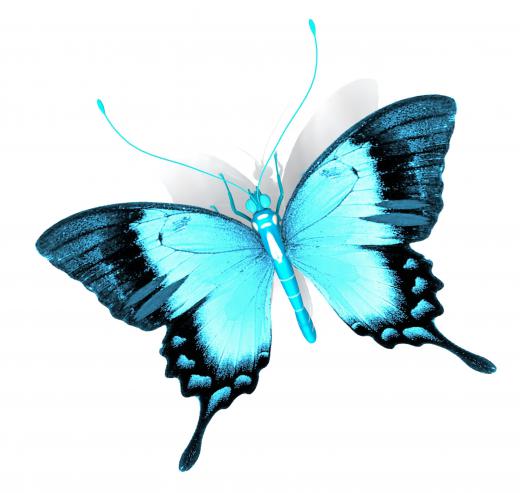What are Some Animals That Have Been Trapped in Amber?
 Michael Anissimov
Michael Anissimov
Amber is a gold substance formed from the fossilized resin or sap of trees. It is sometimes called fossil resin, and the fossilization process is primarily one of polymerization, where monomers in the resin form into longer and stabler polymer chains. It only forms when there are large quantities of sap available, and that sap gets trapped under the earth, leading to pressure over timescales of millions of years. Semi-fossilized amber, intermediate between the resin and amber stage, is called copal. Most pieces are about 30 to 100 million years old, dating all the way back to the Cretaceous Period, when dinosaurs dominated the Earth.
This material is often used as a gemstone for jewelry, although it is not a mineral. One of the reasons amber is famous are for its occasional inclusions — peculiarities in the resin that reveal a bit of trapped organic or inorganic material. Organic inclusions are the most popular, and may sell for millions of dollars to collectors. Organic inclusions are caused when some animal, usually an insect, gets stuck in the drying tree sap and is trapped in the amber forever.

Some animals that get trapped in amber include flies, ants, beetles, moths, spiders, centipedes, millipedes, termites, mayflies, lice, mites, gnats, bees, wasps, scorpions, cockroaches, grasshoppers, damselflies, butterflies, and fleas. Flies (order Diptera) are the most common inclusion, making up 54% of all finds. Non-insect finds include plants such as fir, cypress, juniper, pine, spruce, oaks, beech, maple, chestnut, magnolia, and cinnamon, palms, ferns, and mosses.

Some of the rarest finds are inclusions that are neither plant nor insect: lizards, worms, spiders, frogs, crustaceans, mushrooms, mammal bones, feathers, and mammal hair. Larger animals, such as most mammals, are too big to get trapped in tree resin, easily stepping out of it even if they are stuck momentarily. Sometimes the resin makes contact with water before it forms into amber, and will be filled with inclusions of marine crustaceans. Altogether, about 1000 species of animals have been found in this way.
Amber inclusions are somewhat rare but not incredibly so. In Dominican amber, 1 inclusion can be found in every 100 or so pieces, in Baltic amber, inclusions are found in every 1000 or so pieces.
AS FEATURED ON:
AS FEATURED ON:



















Discussion Comments
Is this true with the mosquito from the movie jurassic park? would the mosquito still hold blood in it?
Post your comments